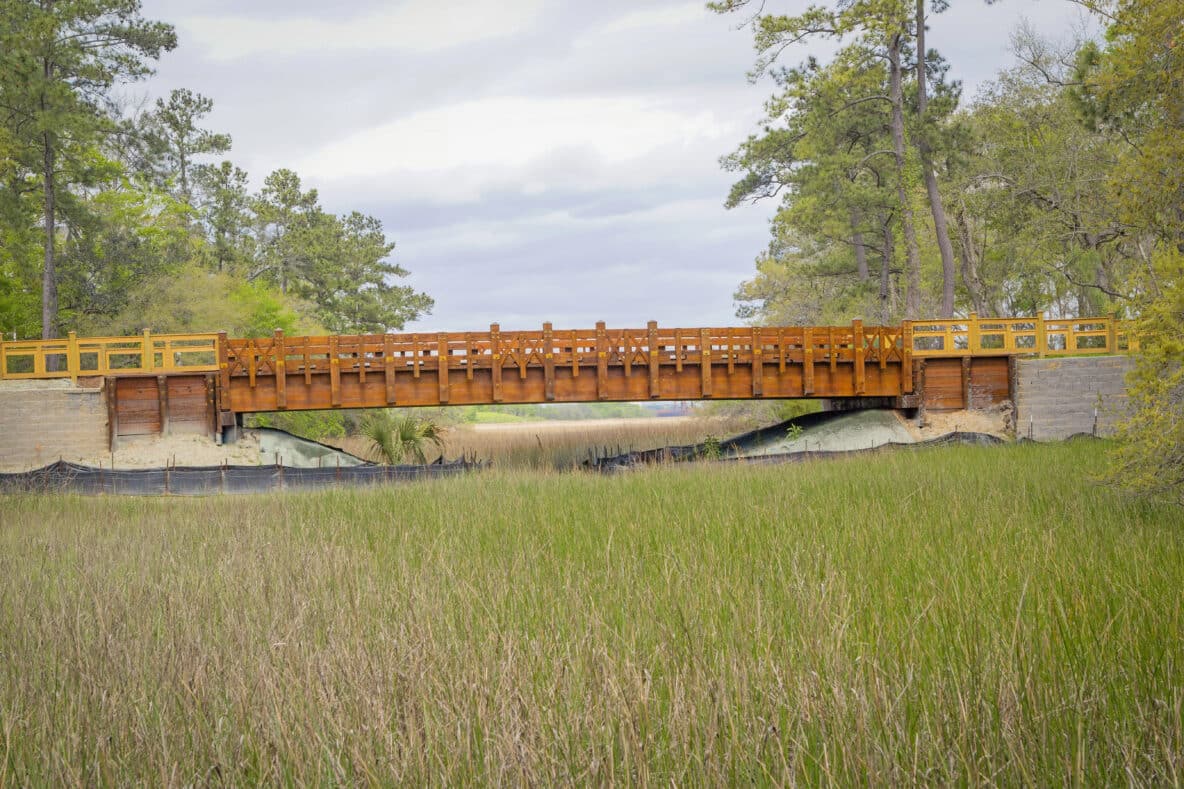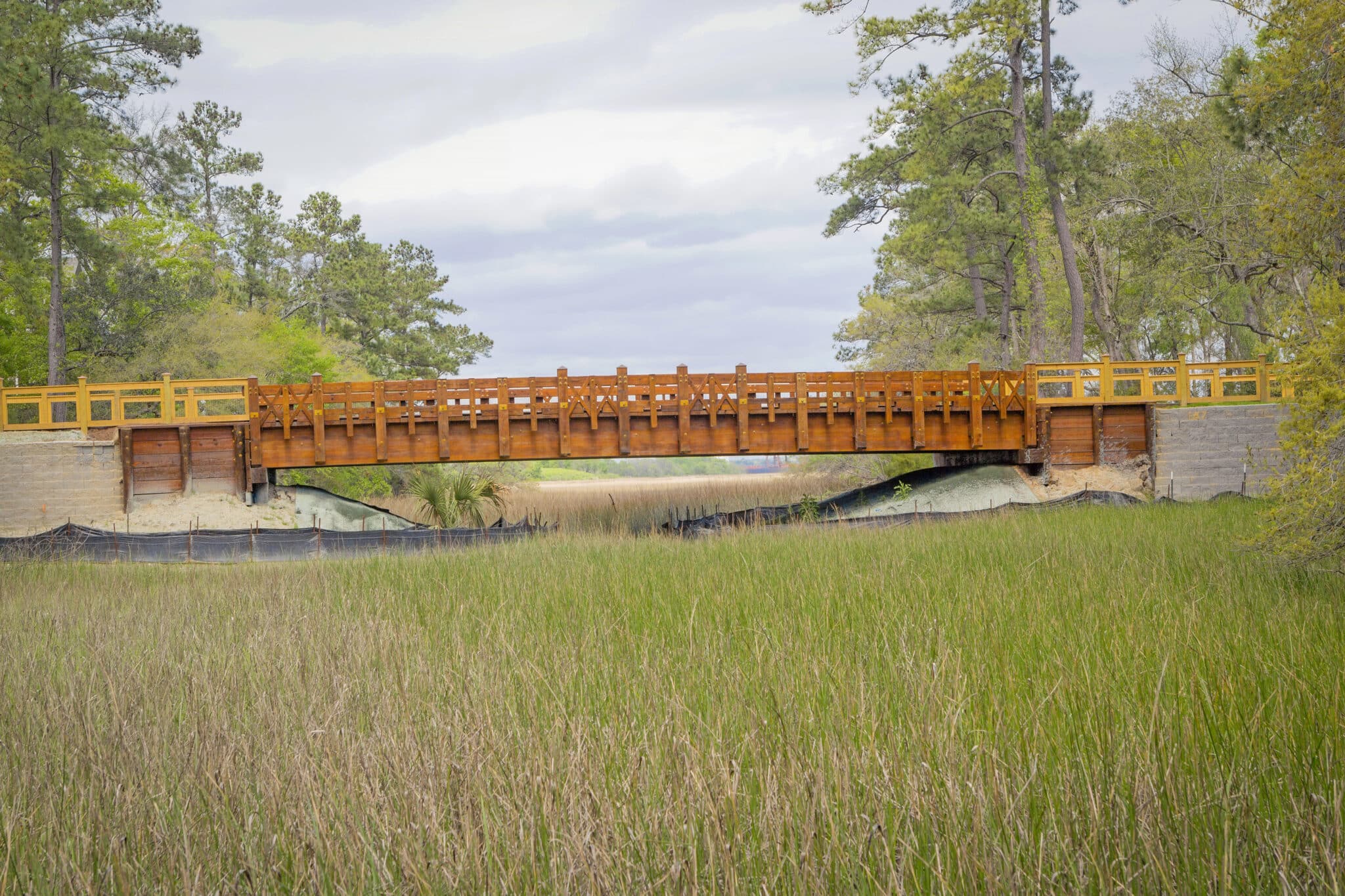
Sustainability of Wood as a Construction Material: A Deep Dive into Wooden Bridges
As environmental concerns continue to grow across the globe, industries are re-evaluating their material choices. In the construction industry, the search for sustainable alternatives has led to a resurgence in the use of wood as a primary material. For centuries, wood has played a vital role in building everything from homes to bridges. Today, it stands as a leading sustainable choice for modern construction, particularly in the case of wooden bridges. The sustainability of wood in construction goes beyond mere functionality; it supports biodiversity, reduces carbon footprints, and promotes energy efficiency.
At York Bridge Concepts (YBC), our commitment to creating environmentally conscious infrastructure has led us to focus on wood as a cornerstone material. This blog will explore the sustainability of wood in construction, particularly for bridges, and illustrate why wood is the ideal choice for eco-conscious bridge-building efforts.
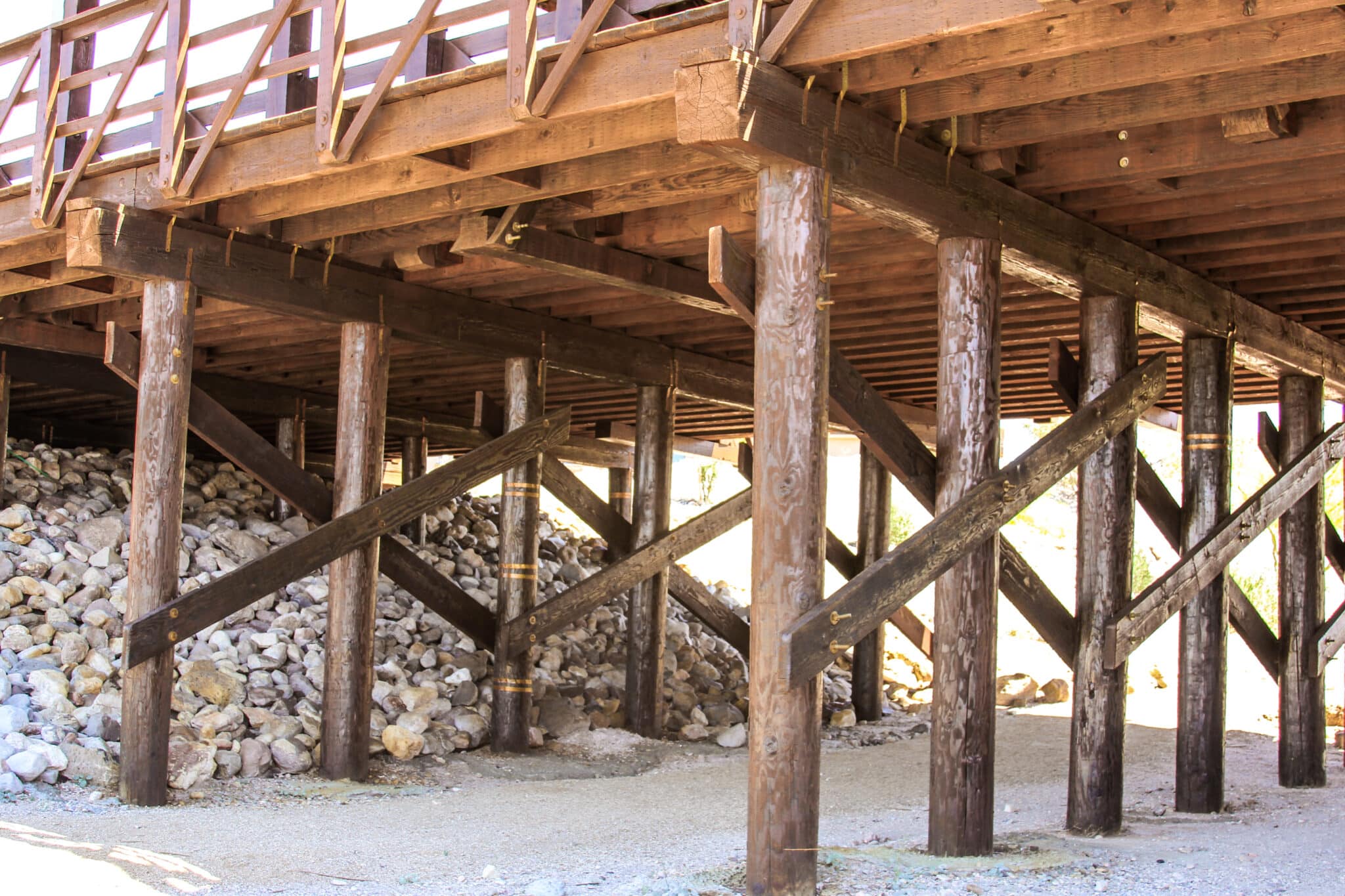
The Environmental Benefits of Wood in Bridge Construction
Wood as a Renewable Resource
One of the most compelling reasons to use wood in bridge construction is its renewable nature. Unlike steel or concrete, wood is an organic material that can be replenished over time. Managed forests are cultivated with sustainability in mind, ensuring that trees are replanted to maintain a balance between harvesting and regeneration.
- Renewable Forestry Practices: Sustainable forest management includes measures such as selective logging, reforestation, and maintaining biodiversity. This ensures the long-term viability of forests, providing a continuous supply of timber.
- Growth and Carbon Sequestration: While growing, trees absorb carbon dioxide from the atmosphere, acting as carbon sinks. The carbon remains stored in the wood throughout its lifespan, even after it has been harvested and used in construction.
Low Environmental Impact During Production
The environmental impact of extracting and processing materials for construction is critical to the overall sustainability of a project. Wood stands out for its minimal environmental footprint during production:
- Energy Efficiency: Compared to materials like concrete, steel, or aluminum, wood requires significantly less energy to process. It is sourced directly from forests, which reduces the energy needed for extraction and processing. In contrast, steel and concrete production involves energy-intensive processes such as mining, refining, and smelting.
- Waste Reduction: Timber waste from construction can be repurposed or recycled, minimizing waste that ends up in landfills.
Biodegradability and Recyclability
When wooden structures reach the end of their lifecycle, they are far easier to recycle or allow to decompose naturally. Wooden materials can either be repurposed for future construction projects or left to biodegrade, contributing to soil fertility in some cases. Other materials like steel or concrete, by contrast, require complex and energy-heavy processes for recycling or disposal.
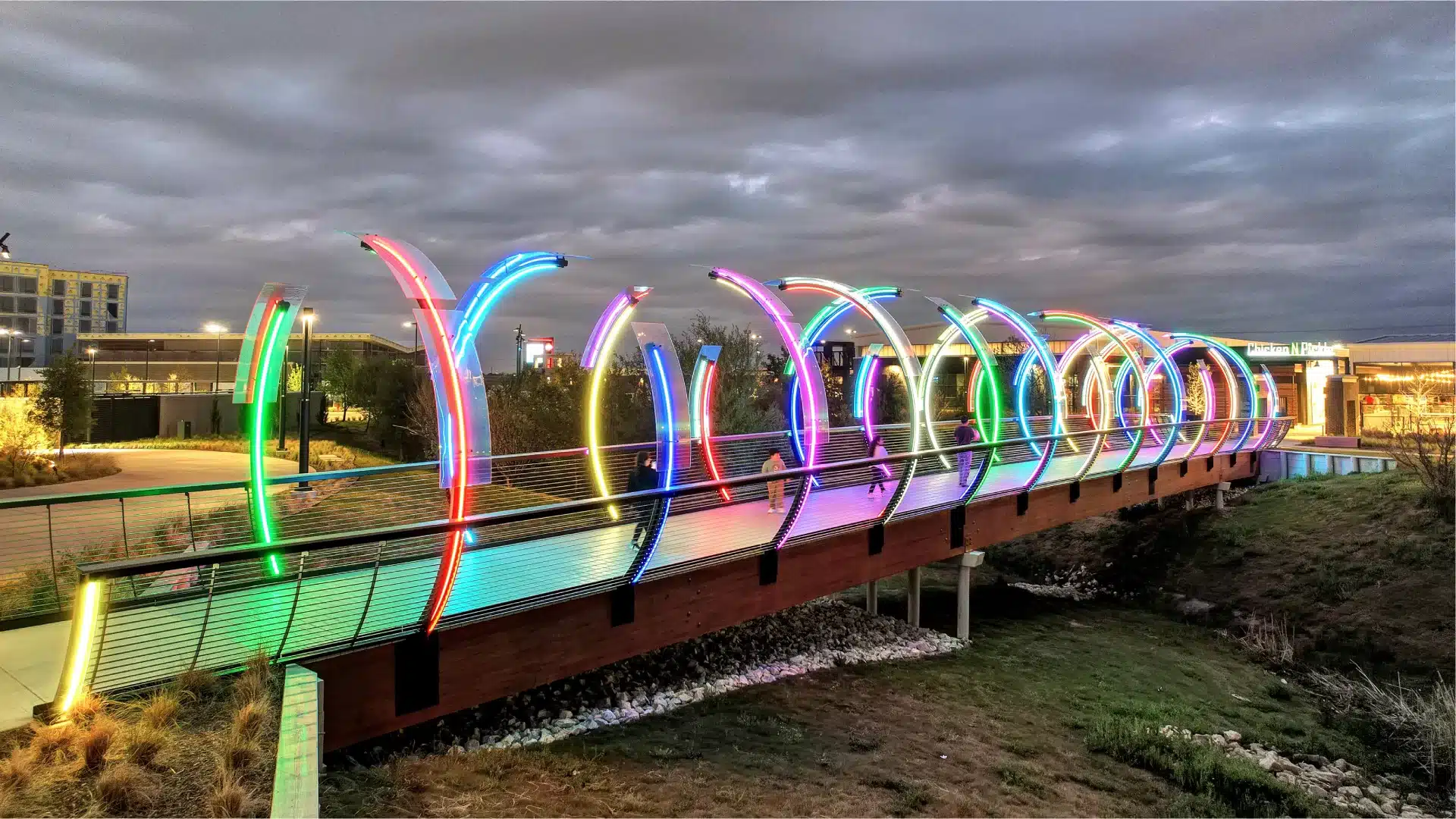
Wooden Bridges – A Model of Sustainable Infrastructure
Wooden Bridges: Historical Perspective and Modern Relevance
Wooden bridges have been constructed for thousands of years, serving as vital infrastructure across many civilizations. Today, they are making a comeback, as sustainable construction practices take priority. The marriage of traditional craftsmanship with modern technology ensures wooden bridges meet today’s safety standards while supporting eco-friendly design.
- Durability and Longevity: Through modern preservation techniques, such as pressure treating wood with environmentally safe preservatives, wooden bridges can last for decades, sometimes even surpassing traditional steel or concrete bridges.
- Aesthetic Appeal: Beyond sustainability, wood offers a natural, rustic charm that integrates well with most landscapes, particularly in parks, resorts, and nature reserves. Its organic appearance is often preferred for projects where harmony with the environment is a priority.
Lower Carbon Footprint of Wooden Bridges
A primary benefit of wooden bridges is their ability to reduce overall carbon emissions compared to steel or concrete alternatives. From raw material extraction to the assembly of the final structure, the use of wood minimizes carbon output at every stage.
- Lightweight Construction: Wood is a lightweight material compared to steel or concrete, which reduces transportation emissions and the energy required for lifting and assembly at the construction site.
- Carbon Storage: Wooden bridges act as long-term carbon stores, preventing the release of carbon dioxide into the atmosphere for the duration of the bridge’s life. This significantly offsets the greenhouse gases emitted during the construction process.
Resistance to Environmental Stressors
Thanks to advancements in engineering, wooden bridges today are more resistant to environmental stressors such as moisture, pests, and fire. This improves the longevity and durability of wooden bridges, ensuring they remain a sustainable option for infrastructure development.
- Weatherproofing: Modern wood treatments can improve resistance to moisture, preventing decay and rot in environments where exposure to rain and humidity is common.
- Pest Resistance: Pressure-treated wood can also resist pests like termites, which extends the lifespan of the bridge and reduces the need for replacement materials.
- Fire Safety: Contrary to popular belief, large wooden beams are resistant to fire. While the outer layer may char, it creates an insulating barrier that protects the inner structure from significant damage.
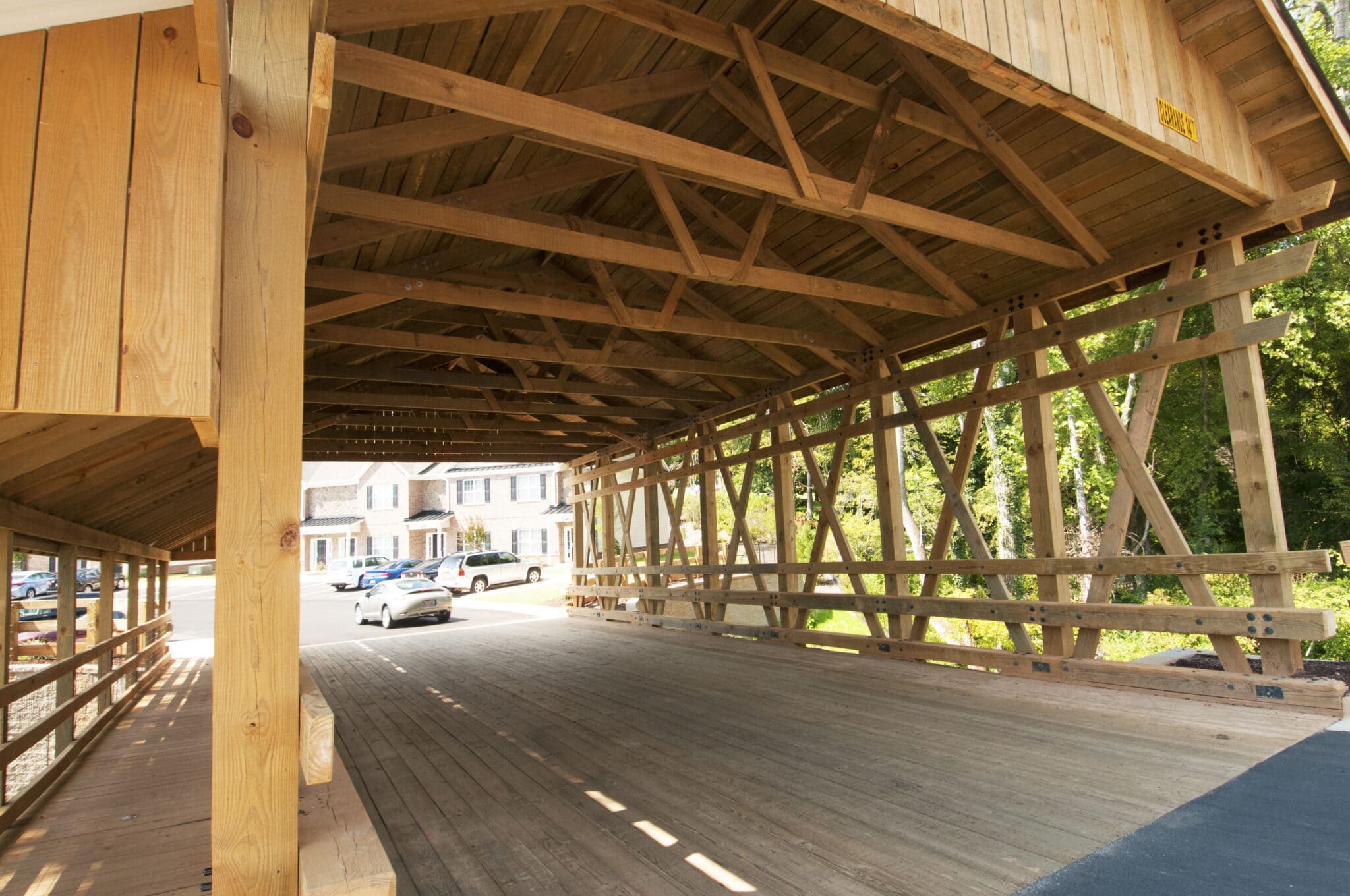
The Lifecycle Benefits of Wooden Bridges
Reduced Energy Consumption Across the Supply Chain
The sustainability of wooden bridges extends to energy savings across their entire lifecycle. From sourcing and manufacturing to installation and eventual recycling, wooden bridges consume far less energy than alternatives such as steel or concrete structures.
- Less Intensive Manufacturing: Wood is a natural resource that requires minimal energy to transform from a raw material to a structural component. This reduces emissions tied to the manufacturing process.
- Simpler Installation: The lightweight nature of wood means that cranes and heavy machinery are often unnecessary or used less during the construction process, saving fuel and reducing emissions.
End-of-Life Advantages
Wooden bridges offer flexibility at the end of their lifecycle, whether through deconstruction, recycling, or allowing the material to naturally degrade.
- Reusability: Wood from decommissioned bridges can be repurposed for new construction projects, further extending its environmental benefits.
- Natural Decomposition: Unlike concrete or steel, which requires intensive processes to break down, wood can decompose naturally without introducing harmful toxins into the environment.
Maintenance and Preservation
The maintenance of wooden bridges is less resource-intensive compared to other materials. Regular inspections and minor treatments can extend the life of wooden bridges for decades, making them not only sustainable but also economically efficient.
- Preventative Maintenance: Simple measures such as protective coatings and treatments help prolong the life of wooden bridges, reducing the need for large-scale repairs.
- Longer Lifespan: With proper maintenance, wooden bridges can last as long as—or longer than—steel or concrete bridges. This makes them an economically viable option for municipalities and private landowners alike.
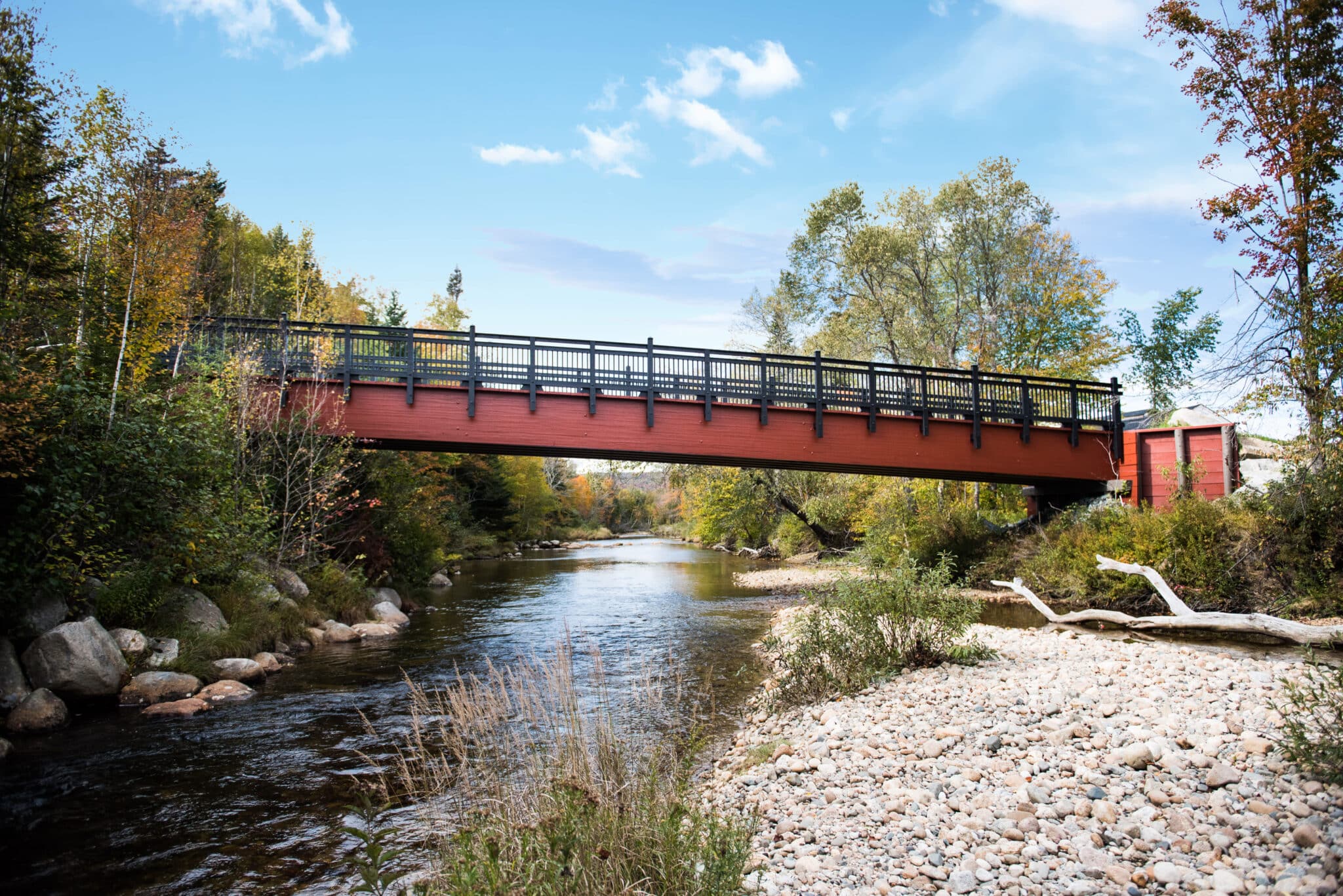
Advancing Wood Technology in Construction
Engineered Wood Products
The introduction of engineered wood products, such as cross-laminated timber (CLT) and glulam (glue-laminated timber), has expanded the possibilities for wooden construction. These products increase the structural capabilities of wood, allowing for larger, more complex bridge designs while maintaining sustainability.
- Cross-Laminated Timber (CLT): CLT is made by stacking layers of wood perpendicular to each other and bonding them with structural adhesives. This creates a material that is both strong and lightweight, suitable for large-scale projects.
- Glue-Laminated Timber (Glulam): Glulam is made by bonding several layers of wood together with waterproof adhesives. It is often used in curved applications, offering strength comparable to steel.
Sustainable Treatments and Coatings
-
While traditional wood preservation techniques often involved toxic chemicals, modern solutions prioritize environmental safety. New treatments enhance wood's resistance to the elements without the harmful environmental side effects.
- Water-Based Preservatives: These modern solutions protect wood from decay without introducing harmful chemicals into surrounding ecosystems.
- Natural Oils and Waxes: Non-toxic finishes made from plant-based oils and waxes provide protection while maintaining wood's natural appearance.
- Water-Based Preservatives: These modern solutions protect wood from decay without introducing harmful chemicals into surrounding ecosystems.
Technology for Monitoring and Maintenance
-
Advances in technology, such as sensors and drones, now enable real-time monitoring of wooden bridges. These tools help identify potential maintenance issues before they become serious, reducing the need for resource-intensive repairs and increasing the overall sustainability of the structure.
- Drones for Inspection: Drones allow for detailed inspections of wooden bridges, identifying areas that need repair or treatment without the need for scaffolding or heavy equipment.
- Sensors for Structural Health Monitoring: Sensors embedded in wooden bridges can track moisture levels, temperature, and stress points, providing data that can inform maintenance strategies and prolong the lifespan of the bridge.
- Drones for Inspection: Drones allow for detailed inspections of wooden bridges, identifying areas that need repair or treatment without the need for scaffolding or heavy equipment.
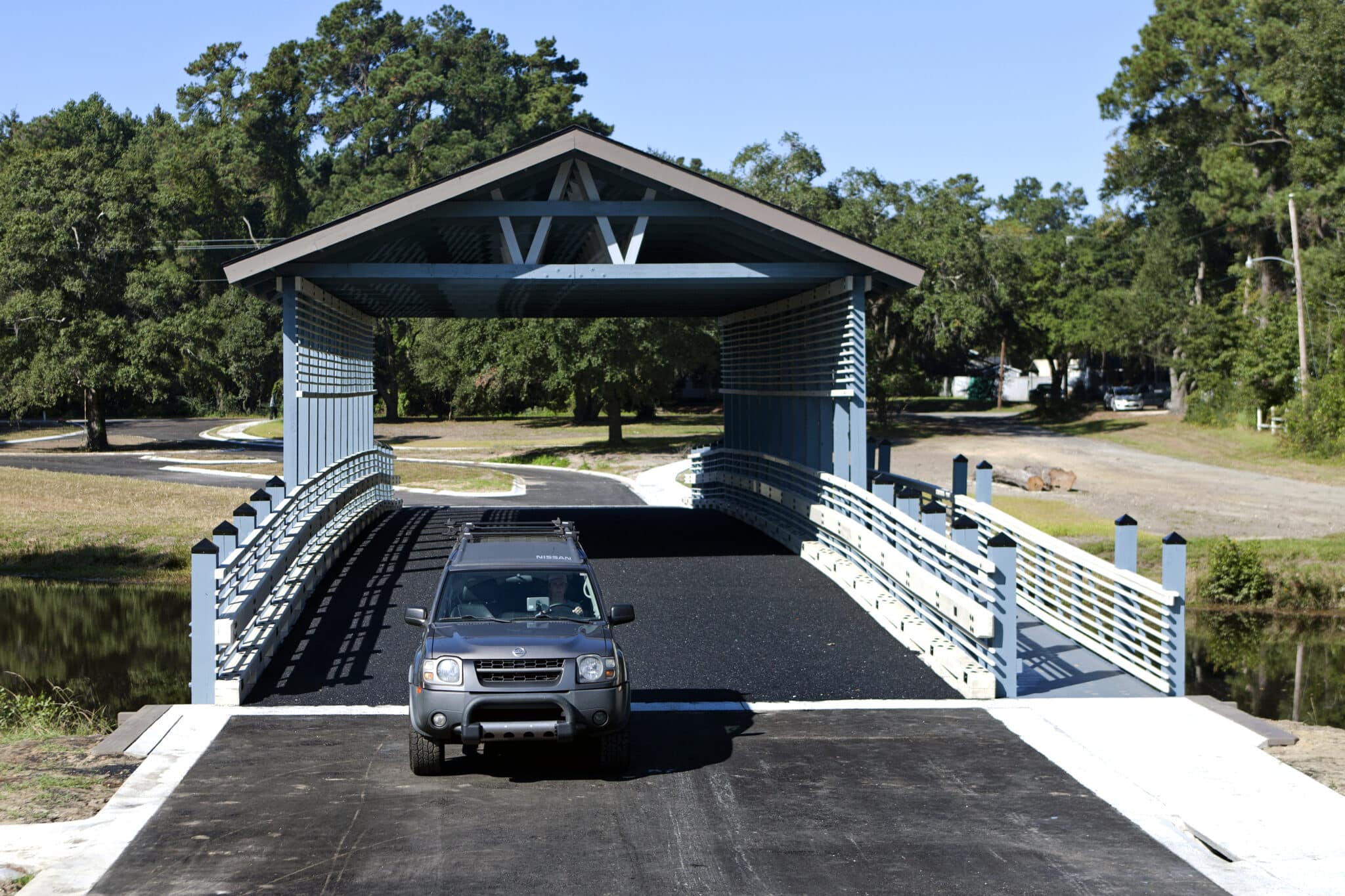
FAQs About the Sustainability of Wooden Bridges
Is wood durable enough for long-lasting bridge construction?
Yes, modern wooden bridges are built using advanced engineering techniques and treated wood, making them highly durable and resistant to environmental stressors like moisture, pests, and fire. Properly maintained wooden bridges can last as long as their steel or concrete counterparts.
How does wood compare to steel or concrete in terms of sustainability?
Wood is far more sustainable than steel or concrete due to its renewable nature and lower environmental impact during production. Additionally, wood acts as a carbon sink, storing carbon dioxide that would otherwise be released into the atmosphere.
Do wooden bridges require more maintenance than other materials?
Wooden bridges can require regular maintenance, such as protective coatings and inspections, but the cost and environmental impact of this maintenance are generally lower than for other materials. New technologies, such as structural health monitoring, can also optimize the maintenance process.
Are wooden bridges safe for high-traffic areas?
Yes, with advancements in wood technology, including the use of engineered wood products like CLT and glulam, wooden bridges are capable of supporting heavy loads and high traffic volumes, making them safe for modern infrastructure needs.
Can wood be recycled or reused at the end of its life?
Absolutely. Wood is highly recyclable, and timber from decommissioned bridges can be repurposed for new projects. If not repurposed, wood can biodegrade naturally, unlike steel or concrete, which require energy-intensive processes for disposal.
Wood Bridges: A Viable Solution
The sustainability of wood as a construction material, particularly in bridge construction, is undeniable. From its renewable nature to its lower carbon footprint, wood presents a viable solution to the environmental challenges facing modern infrastructure. Wooden bridges, in particular, exemplify the benefits of sustainable building practices. By choosing wood, we not only create structures that are durable, aesthetically pleasing, and environmentally friendly but also contribute to a greener future.
For more information on the environmental benefits of wooden bridges, visit our cornerstone content page: Environmental Benefits of Wooden Bridges.
Create Your Legacy Today
Discover the intersection of strength, durability, and environmental responsibility with York Bridge Concepts. Let's build a bridge to the future together.

